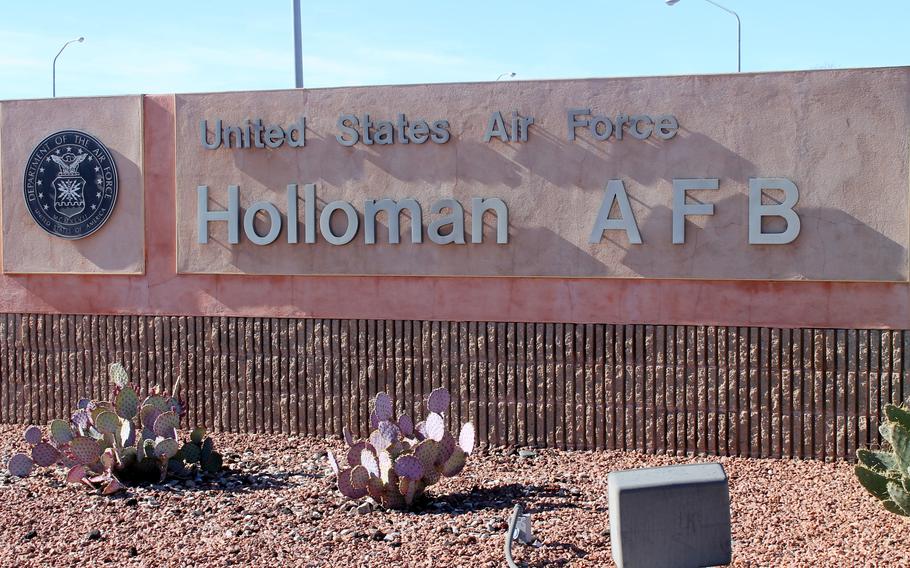(Tribune News Service) — Plumes of perfluoroalkyl and polyfluoroalkyl substances (PFAS) were found at both Holloman Air Force Base and Cannon Air Force Base near Alamogordo and Albuquerque, respectively.
The contaminant was also discovered at Los Alamos National Laboratory, where the State of New Mexico worked for years to clean up the pollution.
Federally classifying PFAs as hazardous waste by U.S. Environmental Protection Agency could set a path for more uniform regulations of the substances, New Mexico Gov. Michelle Lujan Grisham said, as they are known to exist in groundwater in New Mexico and other states.
PFAS are chemicals that have been used in food packaging, cleaning products, stain resistant carpet treatments, nonstick cookware and firefighting foam, according to the New Mexico Environment Department.
“In the absence of a federal framework, states continue to create a patchwork of regulatory standards for PFAS across the U.S. to address these hazardous chemicals,” Lujan Grisham said in a news release.
“This leads to inequity in public health and environmental protections. This petition seeks swift EPA action to create a federal framework that will equally protect all communities across the U.S. by declaring PFAS what it is – a hazardous waste under federal law.”
On June 9, New Mexico Environment Department Cabinet Secretary James Kenney testified during the Senate Committee on Environment and Public Works hearing “PFAS: the View from Affected Citizens and States,” which saw leaders from multiple states describing their specific issues with PFAS and make recommendations to lawmakers
Kenney suggested Congress list PFAS as a hazardous waste under the Resource Conservation and Recovery Act and for the EPA to develop federal regulations to prevent exposure to the people and the environment.
“New Mexico faces particular impact from the use of aqueous film forming foam (“AFFF”), the concentrate of which contains PFOA and PFOS,” Kenney said. “AFFF is a firefighting foam developed in the 1960s to be used for flammable liquid fire extinguishment.
“Training with AFFF is a critical part of proper AFFF use, and my state has contaminated areas directly associated with those training activities.”
AFFF was used on U.S. Air Force installations including Cannon and Holloman Air Force at fire training areas, however, the foam has been used, stored or released in other locations including hangar fire suppression systems, firefighting equipment testing and maintenance areas and during emergency response actions due to fuel spills and other emergencies, Kenney said.
Although the drinking water on Holloman Air Force Base is not affected by PFAS contamination as it comes from wells near Alamogordo, recreation has suffered since one of the areas affected by PFAS contamination is Lake Holloman, he said.
He pointed to a request in 2019 by New Mexico Attorney General Hector Balderas that the Air Force close Lake Holloman due to the contamination and the New Mexico Department of Health directed the public to avoid swimming in or drinking of the water.
“Lake Holloman is considered an important habitat for birds, including migrating ducks, shorebirds, and a number of federally listed endangered species and state-listed species of concern,” Kenney said.
“Lake Holloman also serves as a valuable recreational resource to the community surrounding the base, as it is used for boating, bird watching, and camping.”
(c)2021 the Alamogordo Daily News (Alamogordo, N.M.)
Visit the Alamogordo Daily News (Alamogordo, N.M.) at www.alamogordonews.com
Distributed by Tribune Content Agency, LLC.

(Facebook)